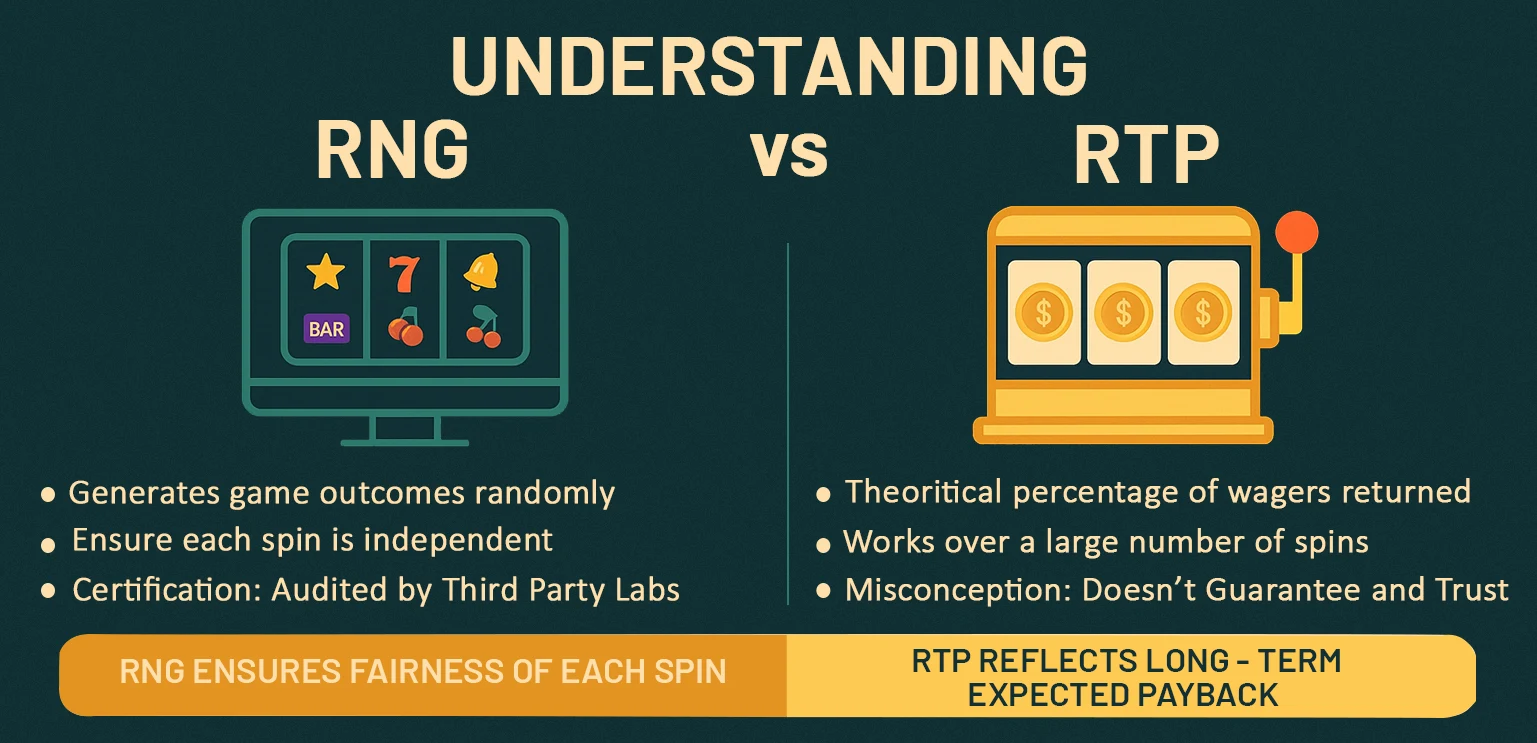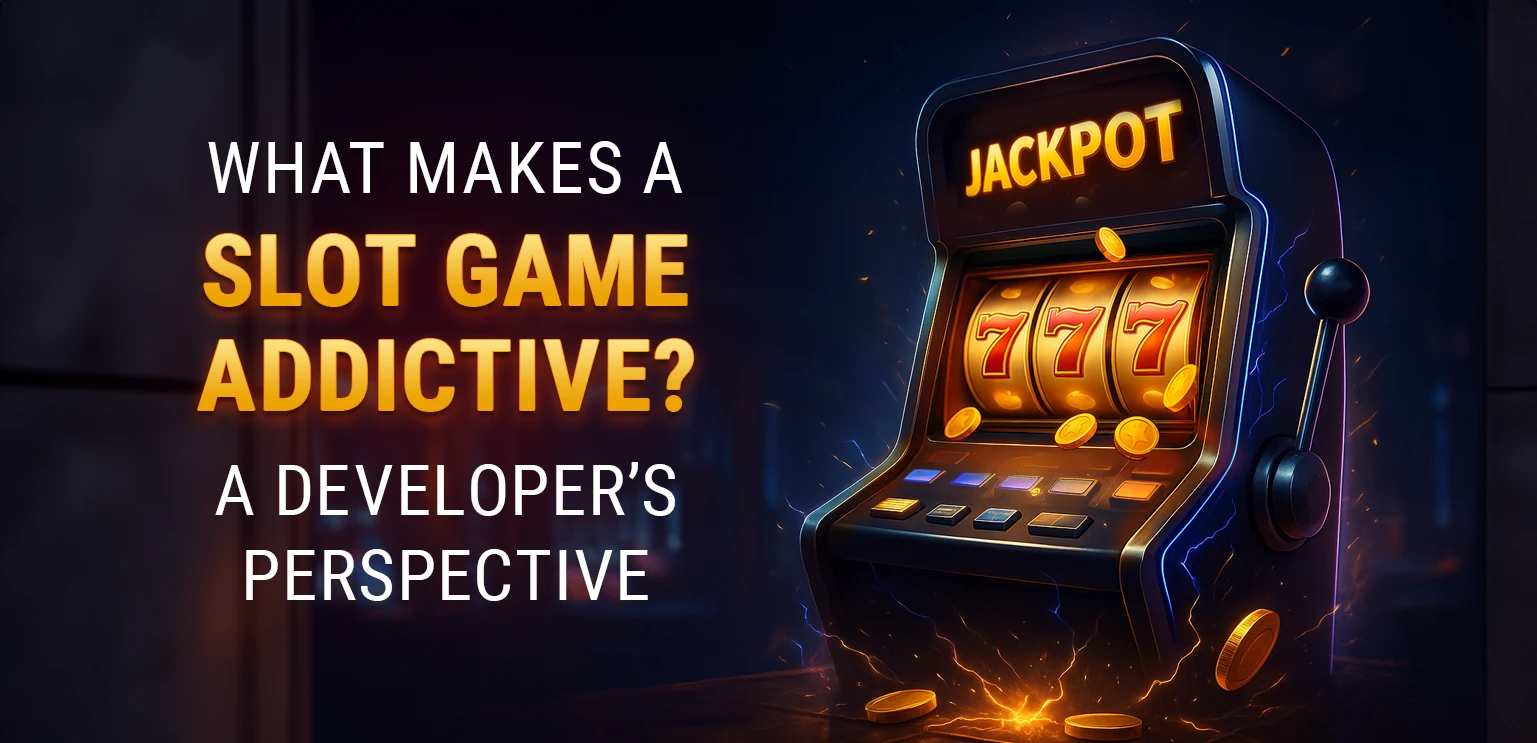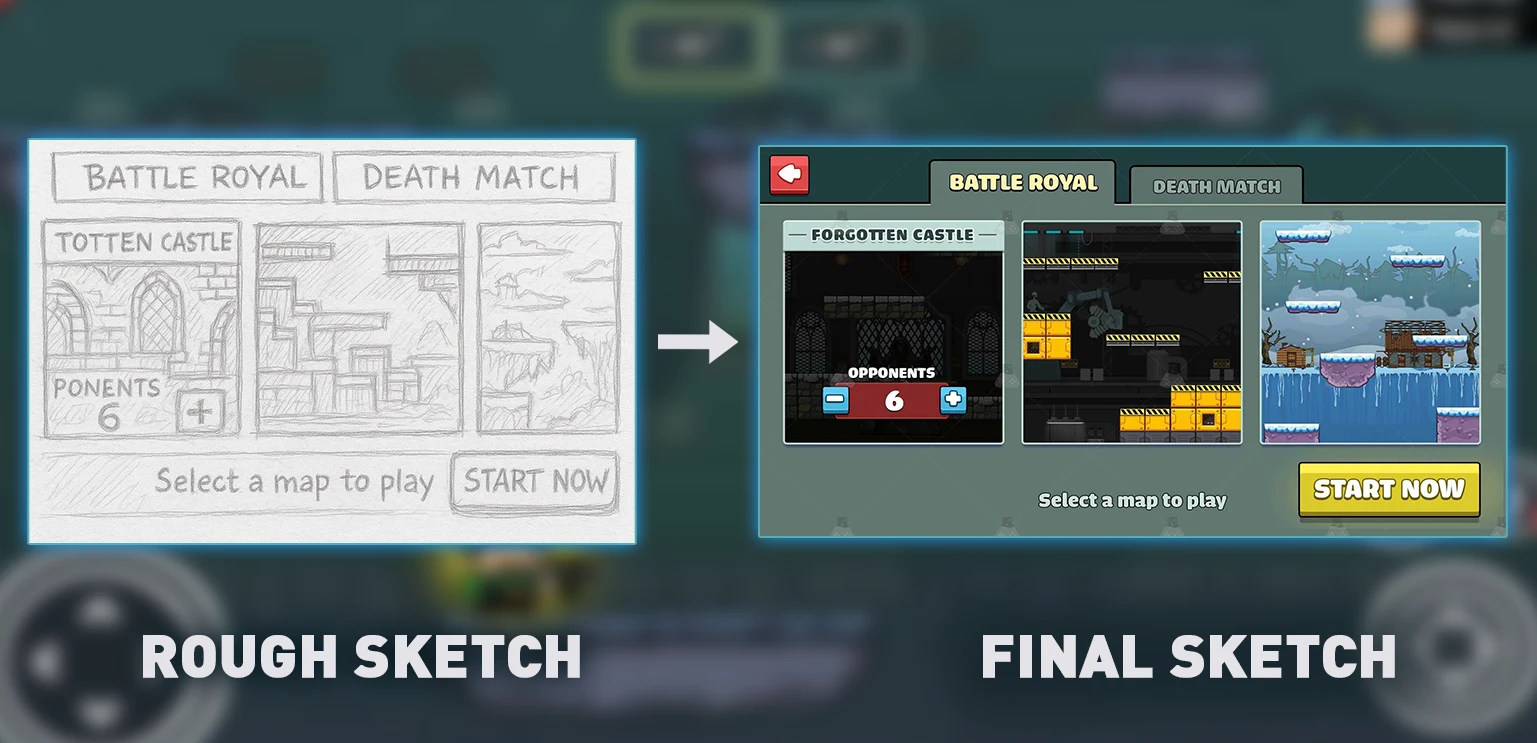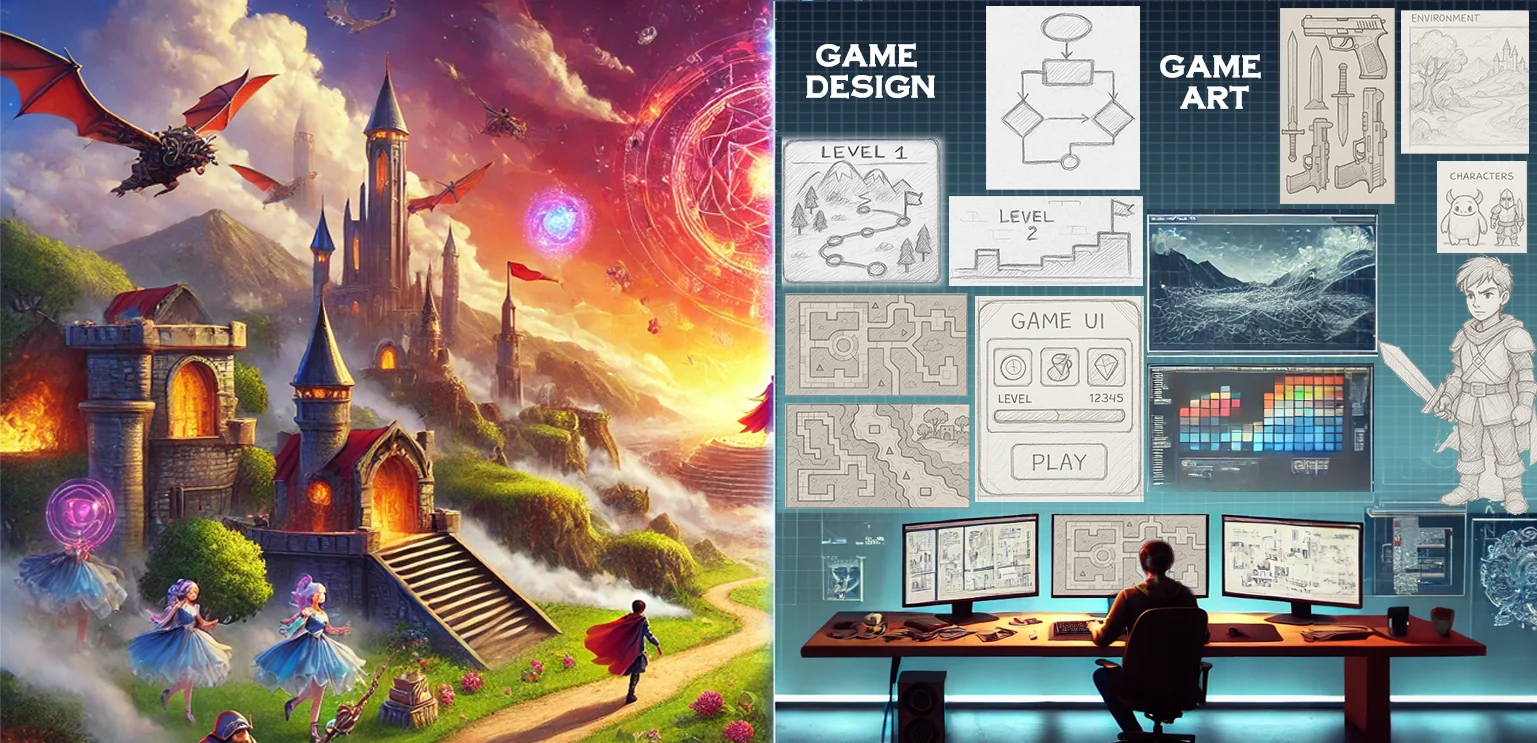All About Slots- Costing, Development, Publishing
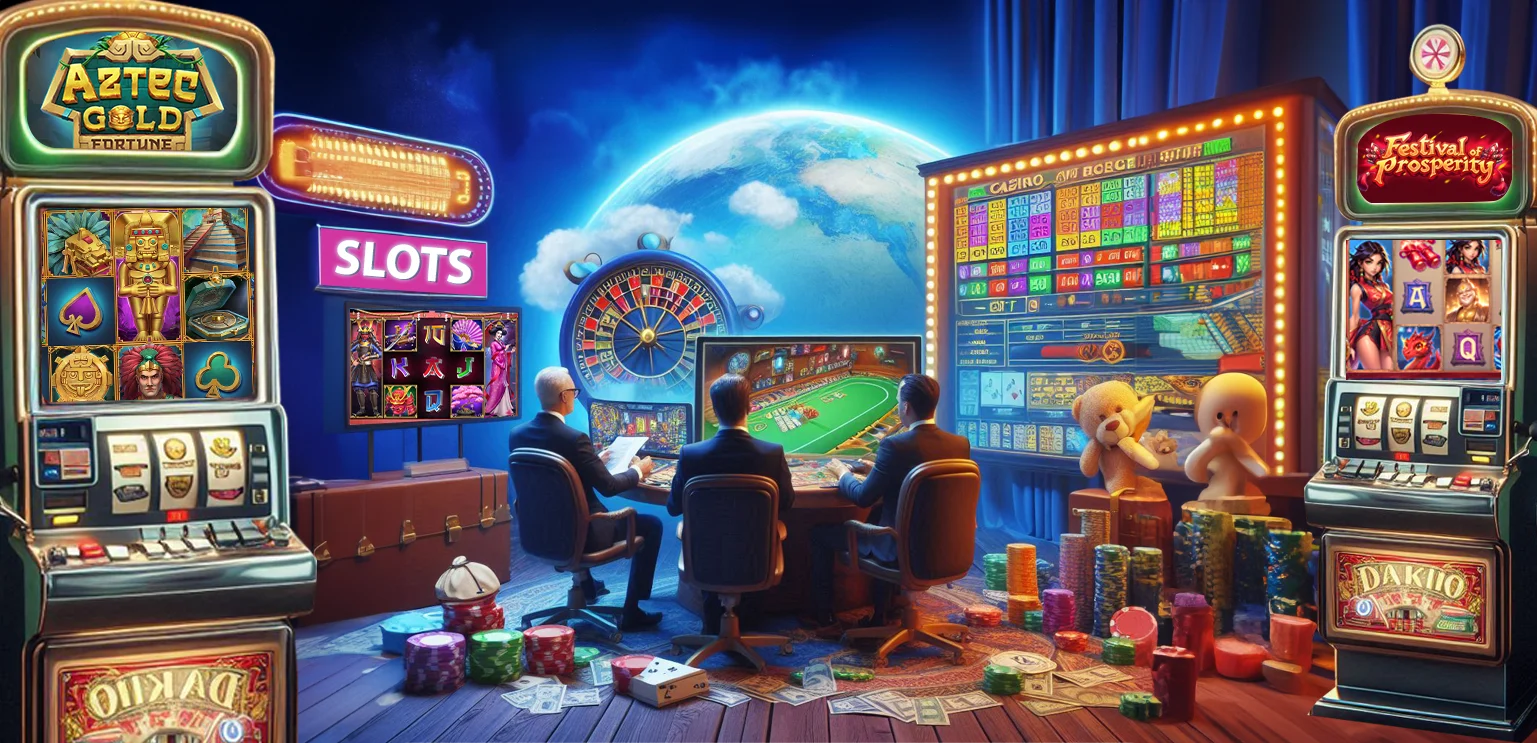
Slot games have immense popularity in the gambling world, and their popularity enhanced the availability of Slot machines. Now, Slots are available from casinos to our cell phone screens. Indeed, slots are no more limited to physical casinos; gamblers can even enjoy and try their luck to win jackpots through Live casinos or Video slot games.
Slots have been running and attracting gamblers for hundreds of years, and since the 1900s, it has taken a special place in casinos globally.
So, till this reading, you must have learned about this week's topic; Slots. Indeed, you are right and reading a fruitful blog, rich with Slots' information. If you are curious about Slot and want to know the know-how of the Slots, this is for you.
In this blog, we will discuss all Slots, including Slot game development, Slot game art development, Slot development costing, Slots features, benefits of outsourcing Slot game development services, and much more that would amaze you. So, please keep reading and start learning from its revenue growth.
Revenue Facts About Slot Games
Image
-
A news published in PRN stated, "The slot machine market is poised to reach USD 8.21 billion during 2020-2024, progressing at a CAGR of over 10% during the forecast period."
-
Canadian Gaming Association has also shown a report which stated that legalized gaming has nearly tripled in size since 1995, from $6.4 billion. And, it made $15.1 billion in 2010.
-
Another factual research shows that Slot makes 50% of casino revenue, while some reports show that Slot shares 85% of casino revenue.
-
According to German news channels, Online slots helped them see a good revenue generation hike. Within a few months, Germany received an increase in tax revenue of about 15.5% because of the expanded online slot market.
In the above section, we have mentioned some revenue stats of Slot games in different reigns of the world. Now, we are going to make you aware of fun facts that may be surprising to you.
Seven Surprising Facts About Slot Games
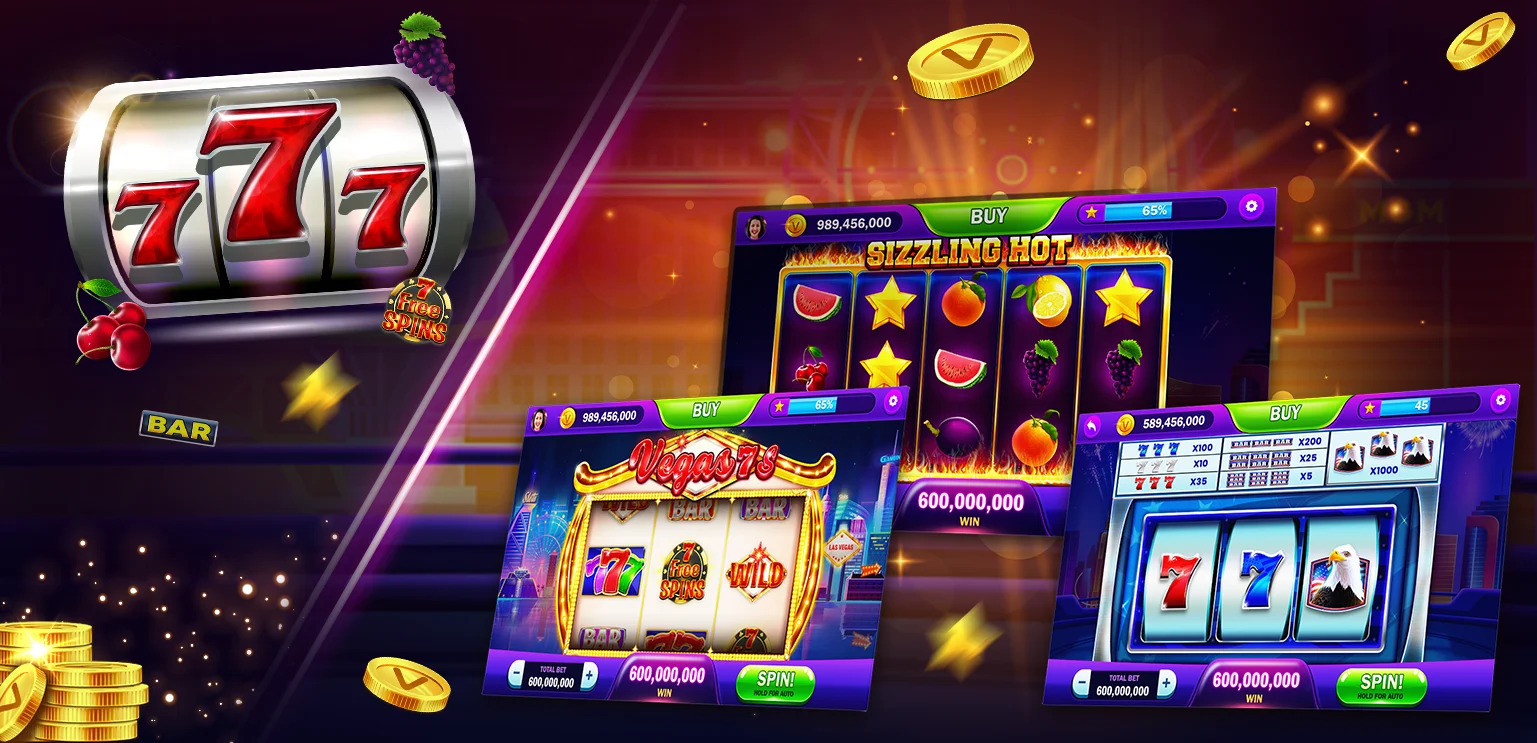 We have heard a lot of myths about Slots and video slot games, like the number of reels and number of players, and revenue stats, but there are more things that can surprise you and make you numb for a moment. Let's start with its age.
We have heard a lot of myths about Slots and video slot games, like the number of reels and number of players, and revenue stats, but there are more things that can surprise you and make you numb for a moment. Let's start with its age.
Slots are Older than the Oldest Person on the Earth
Many people are not aware of the fact that Slots are older than any person living in this era; it has been 140 years since the first slot machine was invented back in the 1880s in the US. For an idea, those slots were simple and ancestors of video poker machines.
Japan is the Hub of Slots' Casino.
We have always heard that Las Vegas is the city of casinos and has the highest number of Slot machines. Although this is not a fact, actually the hub of Slot casinos is Japan. Indeed, Japan is not only famous for Pachinkos, but studies revealed that there is a slot machine for every 27 people in Japan, while in the United States, there is one machine for every 350 Americans.
Moreover, Japan's Pachinko (Pachinko's Parlors) market generated more revenue than Las Vegas, Macau, and Singapore combined in the year 2015.
Most Profit-Sharing Game in the Gambling Industry
If you are exploring Slot games for the first time, you may not find this fact amusing or factual, although it's certainly proven that slot machines are the single most profitable game in the casino industry.
For many years, some well-known Slot games have consistently increased revenues for casinos, both offline and online. Those masterpieces are still favorites among players since they are always in vogue and would never go out of style.
Slots Means, No Strategy to Play
We have heard many YT's masters discussing strategies to win Slot's jackpots or to grab the winning amount by a number of wheels and other non-factual talks. However, Slots are designed with an RNG game system and won't give you a chance to make strategy; the game is simple to play, as you must have seen on reels. Lastly, no strategy remains to win Slots; it is just your luck.
Professional Slot Machine Players Exist
Like other games and sports, casino games also have professional players; however, people are confused when they know that professional Slot players also exist.
Professional slot machine players don't concentrate on honing their slot techniques. However, they continue to invest a lot of time in researching the greatest payout percentages and evaluating slot machines to offer themselves the best long-term winning prospects, as there is no way to improve your game or develop a strategy for playing slots.
Online Video Slots Payout Better
It's also fascinating to note that online video slots pay higher than offline slot casinos and also pay high bonuses and other benefits to online gamblers, which cannot be redeemed by offline players. Click here to learn more about the Casino's features.
RTP percentages range from the middle of the 80s to the low 90s on most land-based slot machines. In comparison, online slots typically have RTP values between 94% and 98%.
No Hot and Cold Slots
This is one of the biggest misconceptions about Slots that there are "hot" or "cold" slots; it is just a misconception, nothing else. Don't let yourself adopt this talk anymore since you'll hear a lot of players talking about something that doesn't exist.
Since Slots are engineered to be fully random, slots cannot become hot or cold. Each spin generates a fresh result that stands alone from the preceding ones.
Here, we have discussed interesting facts and revenue of Slots. In the next section, we will discuss what a slot is in detail.
What is a Slot or Video Slot Game?
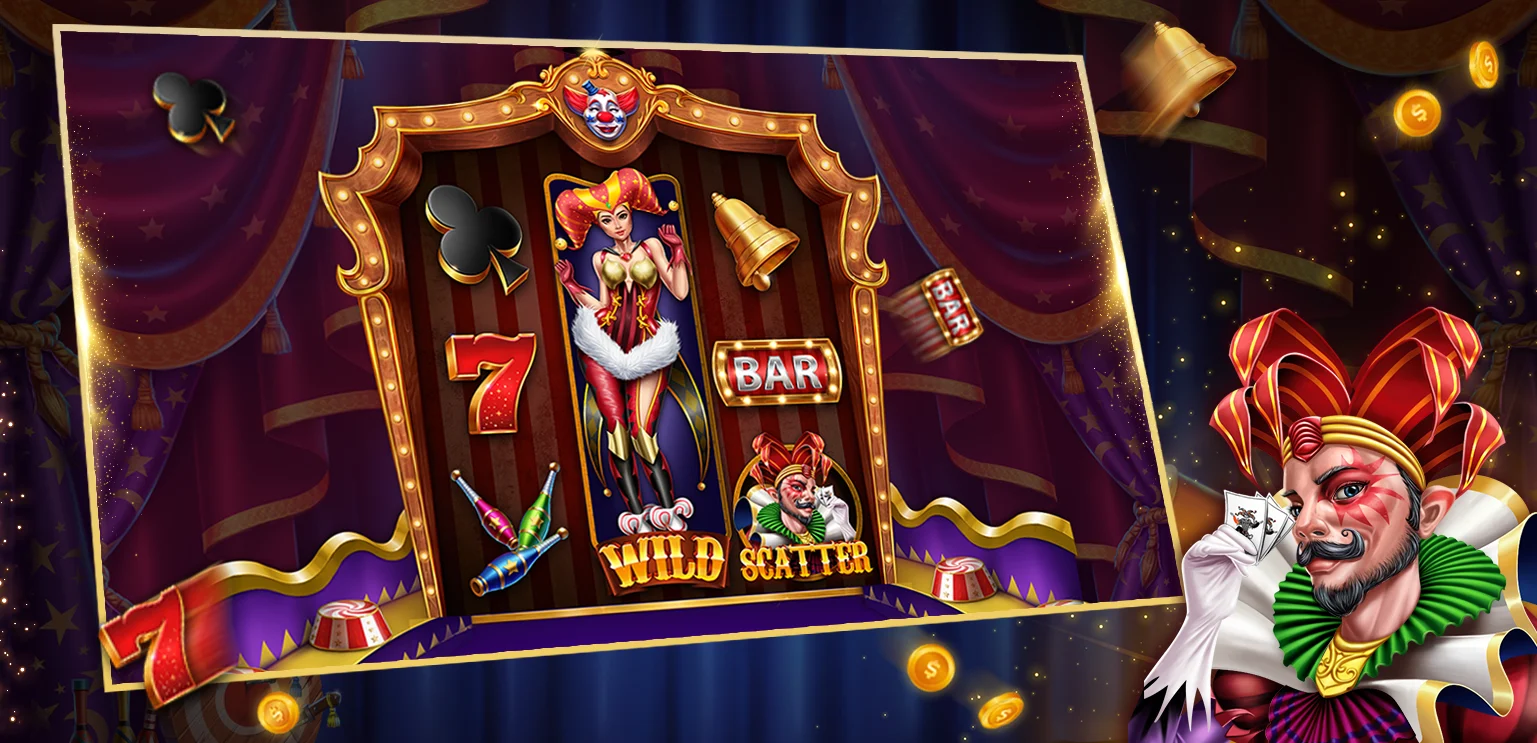 Slots or video slots are a part of casino games that can be played online or offline. Slot game is a type of bet-and-spin game. The spinning wheel is the game's key element. The user only needs to press the "Spin" button to have an incredible gaming experience; this game does not require abilities or previous gaming expertise to win.
Slots or video slots are a part of casino games that can be played online or offline. Slot game is a type of bet-and-spin game. The spinning wheel is the game's key element. The user only needs to press the "Spin" button to have an incredible gaming experience; this game does not require abilities or previous gaming expertise to win.
Players can place bets and spin the reels to hit winning combinations of symbols and earn payouts.
Slots Vs. Video Slot Games
A video slot game is played on a computerized console similar to slot machines that are played in real casinos. Although, video slot games typically have a larger number of pay lines and more interactive features than traditional slot machines, which were designed with hard wares.
Moreover, video slots are often based on popular themes or characters from movies, television shows, or other forms of media, while physical slot machines are used to design with classic art.
Video slot games also have immense popularity among gamblers because they offer a wide range of themes and features, including wild symbols, scatter symbols, free spins, and progressive jackpots.
Different Types of Slots
There are several types of Slots played all over the world; however, some of the famous slots are Video Slots, Progressive Slots, and more.
Classic Slots
The classic slot game is, as its name suggests, these slots traditional and designed with simple variations. It is also famous as three-reel slots and is played using basic rules with a single pay line.
For example: If the player gets landed three similar symbols in a pay line, he/she will win the game.
Video Slots
Video slots, also known as five-reel slots, are the most popular digital slots. Video slots work digitally and are designed with special features like wild symbols, scatter symbols, and bonus rounds that can increase your chances of winning.
For example: In this gameplay, the player can win through different sets of pay lines, as these games can be developed with 10+ pay lines and special symbols.
Progressive Slots
Progressing slots are also referred to as accumulated jackpots because of the way that jackpots are structured. Progressive Slots are developed with jackpot features, which means that the prize grows every time a player takes a spin. When the jackpot is won, it will reset to a predefined sum.
For example:Progressive slots have various slot machines in gameplay and a defined amount being collected from every player. When they hit any slot under the progressive Slot, the amount goes to the jackpot.
3D Slots
Pinocchio, a well-known cartoon character, has a 3D slot machine game as one example. As a result, the players can enjoy a captivating narrative with five reels and bonus features.
Including 3D animations and compelling narratives can help draw in new players. With the help of 3D game development, firms can thus access a new market that isn't present in conventional slots.
VR Slots
Players can have a casino-like experience with realistic graphics and movements with the use of Oculus headsets. As a result, they immerse themselves in the slot game for hours at a time. In comparison to screen slot games, the virtual reality format offers the players a more realistic experience.
Note: There are mainly three types of slots exist Physical Slots, Video Slots, and Progressive Slots, and all other slots types Penny Slots, Multi reel Slots, and I-Slot are different variations of slots. VR Slots, 3D Slots, and Mobile Slots are platforms that can be used to launch this experience and don't change gameplay, except players' experience level.
Now we have learned about Slots and types, let's talk about their volatility and how it works.
How Does a Slot Game Work?
Online casinos' slots work with a random number generator (RNG) that determines the position of the symbols. An algorithm used by an RNG cycle goes through hundreds of numbers per second to give a unique result. So, it fetches unique and unpredictable whenever a player presses "spin," The result fetched with the RNG system never becomes relevant to the next coming numbers.
RNG works impartially and generates random numbers for each spin. Therefore, the outcome of any subsequent spins is unrelated to the result of the prior spin.
How Does Volatility Work in Slots?
Slot machines can be configured with different volatility levels. The danger of losing a bet is referred to as "Volatility." Since there are three primary types of volatility, the developer can modify the logic of the slots according to the set of volatility: High, Low, or Medium.
For players who desire to win more frequently, low volatility is a good option. For each win, the payments are less, nevertheless. These slot machines are, therefore, low-risk. Players become more involved as they gain more wins as a result.
The high-volatility slot machine game is at the other end of the range. These have the biggest jackpots and prizes. However, there is a greater chance of losing. Players seeking greater risk and greater potential returns can play these games.
Slot Game Features
Slots are popular for their amazing features, as those features help developers in improving the gameplay experience for players. So, in this section, we are going to discuss some of the most popular features of a slot game.
Paylines
Payline is a mandatory feature of Slots and can be from a single line to 1024 pay lines. Payline can be understood as a winning scale; if the user is able to arrange a set of symbols according to pay lines, he will win the game. The more pay lines of slots allow the players more chances to win.
Reels
There are many slots that are developed with unique interactive features like Reel Hold, where players are allowed to choose, which reel they want to hold in place for the next spin. These games help players in boosting winning chances and give you high returns.
Wilds
Wilds are another amazing feature of Slots. A wild symbol can substitute for all other symbols except scatters and special symbols. Wild symbols play a vital role in creating win-win situations for players. However, there are four types of wild in slot machines: Walking Wilds, Shifting Wilds, Expanding Wilds, and Random Wilds.
Scatters
Scatter symbols play magically, and they can work as a bonus symbol and can be paid anywhere instead of the place where it falls on the reels. Users can win big bonuses with scatters, and the more scatter symbols result, the more winning percentages for you. Although, scatters are special symbols and cannot be substituted by Wild symbols.
Mystery Symbols
A mystery symbol is a special symbol; those symbols can transform into other symbols to create winning combinations. These symbols add an element of surprise and excitement to the game, as the player doesn't know which symbol the mystery symbol will reveal until the reels stop spinning.
Free Spins
Spins or Free spins are the most popular features of Slots, and they mostly include free spin features in their games to offer engaging gameplay, as Free spins give extra chances to players to spin the slot machines.
Multipliers
A Multiplier is a bonus card included with every regular win. A simple multiplier starts from 2x and doubles the winning value of the game. Developers can create games from 2x multipliers to 16x multipliers. Therefore, multipliers come in three types: Regular Multipliers, Wild Multipliers, and Progressive Multipliers.
Progressive Jackpot
Progressive Jackpot is a feature of Slots; however, people also recall progressive jackpot machines as Progressive Jackpot Slots. Progressive Jackpot holds a sum of every betting that is being played on different slot machines until it is withdrawn from a player.
Cascading Reels
Cascading reels, also known as tumbling reels or rolling reels. Cascading reels are one of the most popular features of video slot games. This feature causes winning symbols to disappear from the reels and new symbols to take their place, potentially leading to additional wins on the same spin. Cascading reels add excitement and variety to the gameplay and can lead to some impressive payouts for the player.
Mini Slot Features
A mini-slot feature enabled players to play mini-slots within a Slot; some games have multiple mini-slots within a slot. This concept is on boom nowadays, and most casinos are enabling this feature in their slot machines. Mini slots add an element of skill and decision-making to the game and can lead to some generous payouts for the players.
Bonus Wheel
A bonus wheel, also known as a prize wheel or spin wheel, is a special feature that you would see in video slot games. With the bonus wheel, a certain combination of symbols on the reels allows the player to spin the wheel to win a prize.
Pick a Bonus
A pick bonus, also known as a pick-and-win bonus or a pick-em bonus, is a special feature found in some video slot games. It is another popular feature known as "Pick a bonus", where users are allowed to pick a bonus manually. The options may include different objects, symbols, or symbols, and the player must choose one to reveal their prize.
Megaways
In a Megaways game, the number of symbols that appear on each reel can vary from spin to spin, and the number of possible combinations can reach into the millions. Some Slots experts also say that Slot games can be a win in 117,649 ways.
Well, here we have told about various Slot features that can be integrated with the gameplay. However, there are also some aspects that should be considered while developing any Casino game.
Considerable Facts About Slot Game Development
If you are looking to develop a Slot, it may take innumerable hours of brainstorming to create a blueprint that can lead you to achieve a successful result. In this section, we are breaking down those parts for you in a brief session.
Demographics 'n' Development
Produce demographics before brainstorming to launch your own game in the industry, as this is a famous saying that the house always wins, but the house is because of their strategies and mind game behind the gameplay. So, you would always require to collect demographics first before further going ahead; if you are targeting China's market, you would have to come up with Dragon's game theme that would help to connect with the audience.
For development, you can consider having experts in the Slot development team, or you can hire an outsourcing agency to develop your game. An agency can help you in filling all the gaps and would reduce development time through risk mitigation and other essential pros.
Product 'n' Performance
The next thing that you have to mind is how you will release your product, as everything works with great presentation. So, you would have an idea of how you will showcase your product and what will be the key features of your product. This will include the animations, artwork, and audio.
Another crucial factor for any game is experience. You would have to ensure that the game must be optimized and perform robustly even with heavy game assets and can deliver top-class performance. All these aspects establish a preliminary belief that the game is good and can be trusted.
Player Behavior n' the Platform
"Slots are immersing people the same way as video games" this is a fact or can be said to be a fun fact, revealed in a study by MIT. So, it is detrimental to design Slots with additional features to engage gamers in the gameplay. It is not always necessary to set low volatility or high-paying games to engage gamers, but to ensure that players are being rewarded timely and have fun while playing, we have introduced you to additional features of Slots that can help you to retain your customers.
An avid gambler who enjoys playing a certain game on an Electronic Gaming Machine in the casino might prefer to do it from the ease of his own home. Therefore, digitalization can be of use, and we go into the world of online gaming.
Omni platform support is a need for a solid company that creates high-quality games to ensure that users can play the Slots hassle freely on any device: Android, iOS, PC, or tablet.
How to Start Video Slot Game Development?
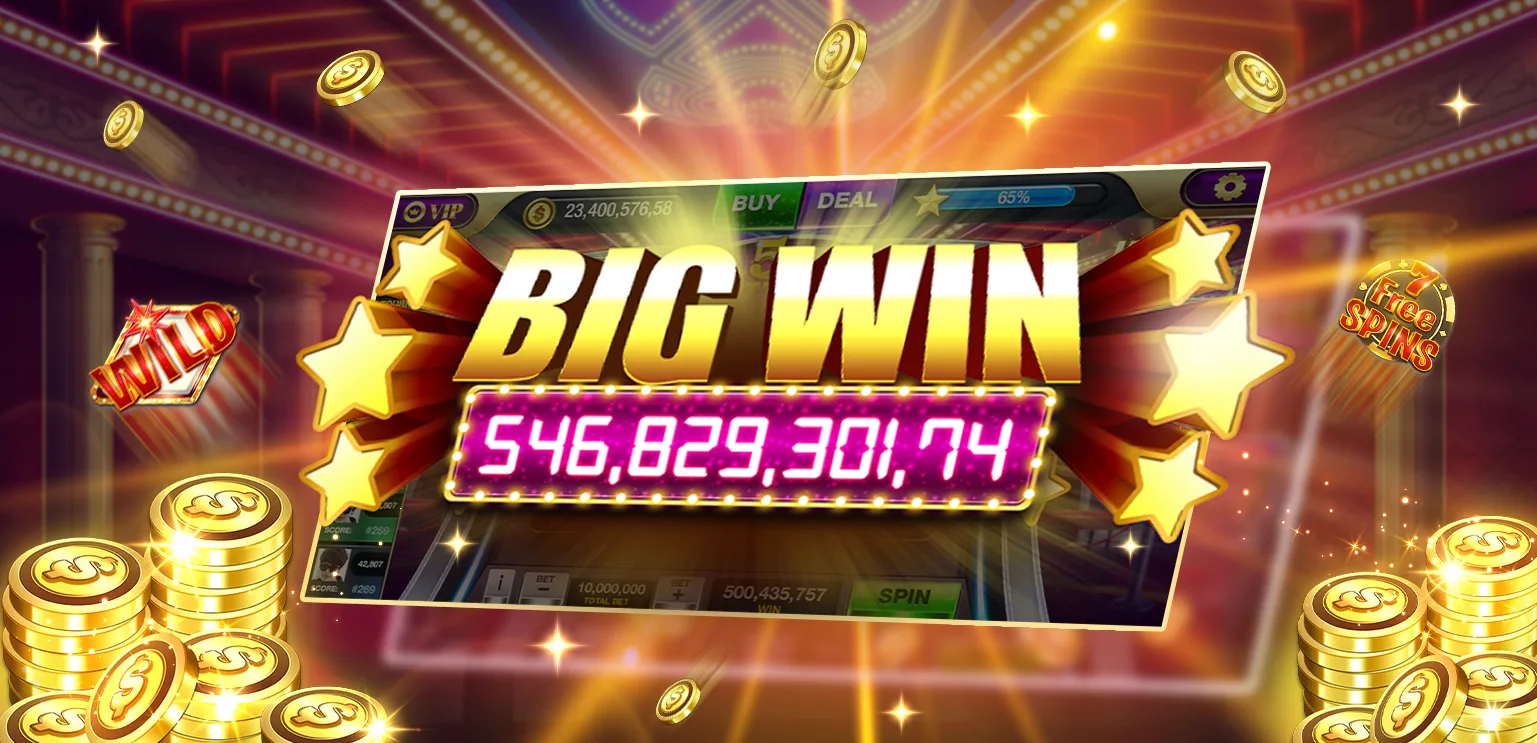 We have learned a lot of things about Slot games, from Slots types to their additional features, facts and revenue stats, and more. In this section, we will let you know the step-by-step process of slot game development, or simply, you are going to learn how to build a slot game in detail. Moreover, we have added Market research and other section that would help you in developing games from scratch.
We have learned a lot of things about Slot games, from Slots types to their additional features, facts and revenue stats, and more. In this section, we will let you know the step-by-step process of slot game development, or simply, you are going to learn how to build a slot game in detail. Moreover, we have added Market research and other section that would help you in developing games from scratch.
While developing any casino game, the main challenge is to build fair gameplay with rewards and simple play games at the same time, so players can enjoy it well.
Idea Generation
Idea generation is the first process for any game; whether you are equipped with an idea or not, you would have to start with this process. In idea generation, which is also known as brainstorming, it is considered to develop an idea about a game and how it will look in the same process, you can discuss your idea with your team and gaming consultants.
They would help you in deciding what the game should look like and how it can be different from existing games by deciding the Slots theme, Slot art Style, Slots Features, Mechanics to be used in the gameplay, including payment integration, and platform to be developed for.
Market Research
To identify your goals, you would have to conduct market research, like what people wish to enjoy and how you would target the industry through your products.
Slot Game Idea -- Is your idea unique and creates a difference in the casino industry?
Trends -- Will your Slot be marketable, or will it be preferred for gaming in the gambling industry?
Language- What are the reigns you are going to cover with the game? Does it require language localization?
Platform -- Which platform can target most of your players?
These questions can help you in creating a development budget for your game and also give you an idea of which will be the best platform to introduce your Slot games or if it should be an omni platform.
A risk analysis should be done after market research. A risk assessment involves identifying potential dangers, assessing the risks, documenting them, and putting the solution into action.
Additionally, market research and risk analysis would help you in deciding whether you can go with an outsourced team or can creating an in-house team can lead you to succeed.
GDD Creation
GDD is a document produced for each game, known Game design document. It is mostly designed by game designers and requires expertise in game development. So, in this process, you would have to hire a game designer or agency services to outline game development requirements.
The GDD involves all types of requirements and concepts of Slot games that help developers, designers, and artists to move forward with one goal and work simultaneously without misconception.
-
Slot features that need to add in the game.
-
Art concept and story of the game.
-
Technology stack to be used for Slot development accordingly.
-
Development Time frame and project completion schedule.
Sketching and Wireframing
In this step, you will have to start working on the concept of the Slots and designing the aspects of the game. Here, you would have to take services or create a team to design the concept art of the game.
The outcome of this step ate for concept purposes that can be modified in later stages of slot game development. You can ensure to design initial sketches, wireframes, and mockups in this stage. Other important game art, like characters, symbols, backgrounds, etc., can also be sketched out and modified later.
Produce Prototype
A prototype is a version of the game that is used to test and refine its mechanics and features. When you get completed with wireframes and initial artwork creation, you will able to create a prototype for the slot game.
Prototyping can help game developers identify and fix problems with the game's design, as well as gather feedback from players to improve the final version of the game.
Producing Prototyping can be a crucial step in the development of a slot game, as it allows developers to experiment with different ideas and ensure that the game is fun and engaging for players with mechanics that are required to be implemented.
Designing Slot Art
Building Slots covered a lengthy process to become a polished version, and Slot art designing work comes in a few final Slot development stages. In this stage, you have a prototype to follow and start art creation for your game.
The slot art team can start rendering characters, symbols, and machines for the final product. Here, UI/UX designing team also lined up with tasks to offer a good user experience with updated artwork for the game.
Start Coding for Slots
Initial coding start for the primary version of the game just starts after producing a prototype and analyzing the project risk, and collecting solutions documents of risks.
Indeed, this is the war ground for developers, where they start writing code and working on the salient features of the game.
As for developing casino games and Slots, RNG is the most important factor for development; developers start to work on the RNG and other aspects like:
-
Winning amount
-
RNG for games
-
Bonus prizes
-
Special features
-
Payment Gateway
During the development journey of slot games, developers also work on other related software that offers transactions and other gaming needs. Furthermore, if you are developing Electronic Gaming Machines or Land-based Slots, developers will start working on Slot machine software development and payment integration software or hardware in this phase only.
Slots are games of gamblers, and they always expect to have an excellent payment gateway as these games run on constant transactions. So, your Slot game developers have to ensure that they are creating a robust and reliable payment gateway for Slots.
So, if you are developing Slots for cross-platform, then Unity or Unreal would be the best Slot game development tools, as these tools are loaded with features that help developers translate games to multiple other platforms.
Game Quality Assurance and Testing
Game testing is an important part of each game development, and most firms do rigorous testing to offer impeccable gameplay experiences to their customers. However, when the game is developed, QA and testing team conducts thorough testing for each functionality of the Slots and also submits their game code to licensing authority to acquire a license for an individual casino game.
There are mainly five testing norms for Slot games as follows:
Unit Testing - Where Slot Quality Analysts and Game testers will check each component's functionality
Integration Testing - In this testing, they will check for issues that arise after integrating API or other services integration.
System Testing - QA will ensure that the game is developed with its technical, functional, and business requirements.
Hardware Testing- This testing mainly requires Land-base Slot machines that are assembled in a Slot machine for TITO or Cash transactions.
Beta Testing – In this testing, you can try playing the game for free in demo mode to get a feel for the gameplay and features. This will allow you to see if the game is working properly without risking any money.
Marketize and Release Slot
When you are ready with your Slot and its license, create a plan for marketing according to the platform. If you are going to launch your Slot on iOS/Android, create a marketing budget or consult with ASO for the same, you can also do online marketing for releasing your game on other platforms like Facebook. Each app store or gaming portal has its laws and regulations, so ensure that you understand them before publishing your slot game.
Well, if you want to learn about game marketing with social media, we have already covered a detailed topic, "5 tips for leveling up Video Game marketing."
Update & Modification
Many times game publishers think that they should only work one time on their games, and they forget that there are lots of chances to retain players. Mini updates can also work as retention tools for your players.
So, always try to update your game with new features; adding more reels to your game or giving bonus prizes can work out for your game growth. Moreover, some updates are mandatory for security reasons, so keep your Slot team there to update you.
Video Slot game development has been explained thoroughly in this long reading session. Here, we also covered the most important information for the land based development process.
How to develop Land Based Slot Machines?
We have discussed thoroughly about video slot game development, which is similar to Land-based Slot machine development; however, there are some different curves that you would have to follow for Land-based Slot machine development.
Conceptualization and Design
Developing Land-based Slots starts with conceptualization, and designing is the first stage. It involves theme creation, the storyline of the game, UI/UX, visual elements creation, and animation.
Game Development and Testing
When the prototype and game visual element have been finalized, the game developers start developing the game, and the hardware development team starts developing a platform for the casino. In this phase, the development and QA teams work together to create the game and ensure that it is fair and fun to play.
Regulatory Approval for Real Money Game
If you are launching the game with real currency gameplay. Make sure that the game is licensed and regulated by a reputable organization, such as the Malta Gaming Authority or the UK Gambling Commission. The regulatory approval process typically involves an in-depth review of the game to ensure that it is fair and compliant with all relevant laws and regulations.
Manufacturing and Distribution
When the game has been approved by reputable authorities, it is ready for manufacturing and distribution to casinos and other gaming venues. This typically involves marketing, partnering with a manufacturer and distributor to produce the game and make it available to players.
How Much Does it Cost to Develop Slot Game?
The development cost of any Slot game can vary from another one. And mostly development cost depends on a number of factors, and features, including the complexity of the game.
In general, the cost of developing a slot game can range from tens of thousands of dollars for a simple game with basic features like three reels with scatter, mega win, or simple artwork. And a Slot would also cost hundreds of thousands of dollars or more for a more complex game with multiple features and high-quality graphics.
Additionally, we have put an expected cost for game development only. There are also ongoing costs associated with maintaining and updating the Slot, as well as the cost of licensing and regulation by third-party organizations.
So, you should focus on the relevant path of development according to your business requirements and then compare for the best prices.
Well, there are ways to reduce the cost of Slot development through hiring an experienced game development studio and developing a simple game with minimalist features in the first version of the game.
Hiring Outsource Studio
Hiring an outsource studio can be an auxiliary in your game development journey. With a small team and expert Slot, a game development outsourced services company, you can reduce the labor cost, and it will also enable you to scale up or down as needed.
Minimalist Features
Begin with a minimalist features list for your first version. It will enable you to add new features and content in the next update or when you hit the market successfully because developing complex games with various features can beat your progress.
Use Existing Game Engine
There is one more way to reduce costs to use existing game engines and development tools to develop your game rather than building everything from scratch to develop your game. Although, it requires proficiency in game development and relevant genre. For this, you can hire an outsourcing studio to develop your Slots.
So, here is the last section that would know the benefits of hiring a Slot game development outsourcing studio.
What are the Benefits Of Hiring an Outsource Slot Game Development Studio?
The slot is a casino game that requires casino development expertise to develop games that are loaded with several features, have a cash transactions facility, and also need to be verified by reputable authorities.
So, here we are discussing several potential benefits of outsourcing the development services of a slot game to a specialized studio.
Cost Savings
This is one of the major benefits of hiring an outsourcing agency for game development or Slot game art services. It is always more cost-effective than hiring in-house employees and spending on their training for project completion to outsource service within the agreed deadline. Moreover, it also saves the cost of buying premium software and other tools that are used to develop Slots.
Development Expertise
Development studios that specialize in creating slot games will have a deep understanding of the technical and creative aspects of game development. Their expertise also helps to fulfill the gaps and offer high quality and engagement for players.
Flexibility
Outsourcing enables businesses to add or eliminate resources on a project-by-project basis without the need to hire permanent employees. So, it would always help you in saving on numbers; you can work with one developer for the long term or hire a dedicated game development team for the short term.
Focus on Core Competencies
By hiring an outsource game development company, you can free up your own team and work on other aspects like marketing, customer support, and other aspects while the development team does their tasks. This can ensure that your company grows and remains competitive over time.
Access to Global Talent
Hiring an outsource game development studio can also provide access to a global pool of talented developers, which can be useful if you are looking for specific expertise or want to tap into different cultural perspectives.
Why Hire Gamix Labs to Outsource Slot Game Development Services?
Gamix Labs game development studios is a team of technically proficient and creative artists who are experts in creating engaging and immersive video slot and Land-based slot games that drive revenue for our clients. Our team of experienced developers has a deep understanding of the technical and creative aspects of Slot game development, and we use emerging technologies to bring your game at Omni platform.
Gamix Labs' USP is our team's ability to create custom-branded slot games that are tailored to your specific needs and requirements.
Gamix Labs is renowned as one of the best Slot game development companies in India. We have a proven track record of delivering high-quality games on time and on budget, and we would love the opportunity to work with you on your next Slot game development Slot artwork project.
We helped various Casinos of Las Vegas, and Macau in developing many casino games, including team has developed Live casino platform.
Wrapping Up:-
We hope this blog helps you in learning each term of Slot games from starting conceptualization to market release. We discussed information about Slot game development, Land-based game development, and much more. We have also shared facts, fun facts, revenue, and an easier process to develop a Slot game for your audience.
FAQs
What is a Slot game?
The slot is a video game that falls under the casino game genre. A player wins the slot when the symbols on their reels land on the winning pay lines combination.
What is RNG in Slot games?
RNG is known as Random Number Generator features integrated with almost every Casino game.
What are the technologies behind Slot game development?
Slot games can be developed using Cocos, Unity, and Unreal engine, with the help of C++, C#, Java, JavaScript, Phyton, Lua, and HTML.
What is the cost of slot game development?
It costs $10,000 to build a basic Slot game with minimalist features; however, additional costing will be liable for authority approval and other aspects.
Why should we hire Gamix Labs for Slot game development services?
Gamix Labs is a full-cycle Slot game development company, provides Slot game development services, Slot game art designing services, and Slot animations services. Moreover, Gamix Labs' team has immense experience in developing Slot game for cross-platform as well as Land-based Slots.
What are the types of Slot games?
There are several types of Slots played all over the world; however, some of the famous slots are Video Slots, Progressive Slots, and more. Other games are: - Classic Slot games - Video Slot games - Land Based Slot games - VR Slot games

